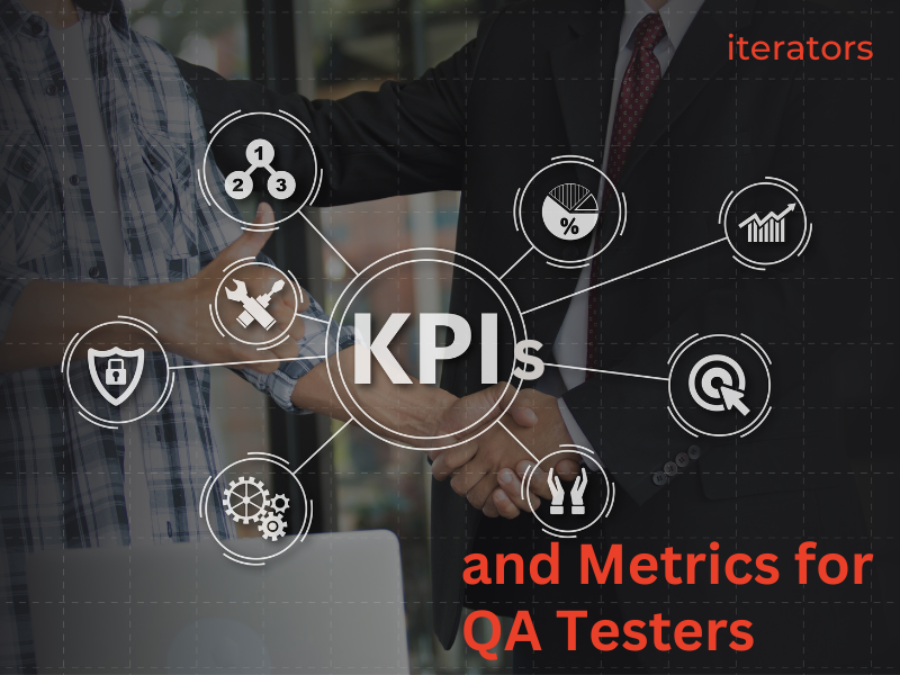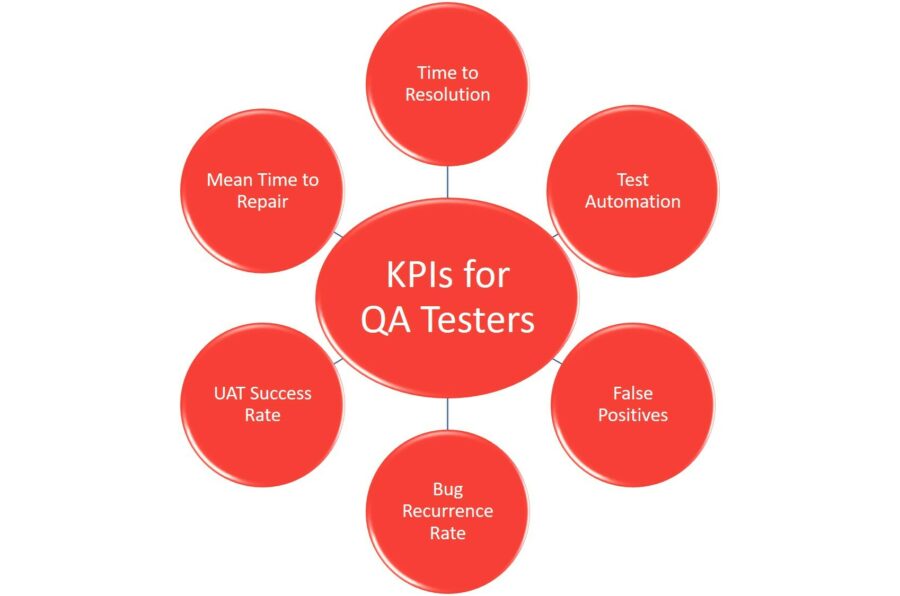Author

Blogs
Article & Observations About Diverse Teams Working Better Together
How To Measure Quality Assurance Performance With KPIs and Metrics For Testers

Quality Assurance (QA) testing is an essential part of the software development lifecycle, ensuring that products and services meet customer needs and expectations. However, it’s not enough to rely on traditional QA methods such as manual testing or simple test plans. To enhance the quality assurance process, it is crucial to monitor and measure Key Performance Indicators (KPIs) related to customer interactions and satisfaction.
In this article, we will provide an overview of QA testing KPIs and metrics, why they are important to track, the benefits of tracking them, the types of quality assurance metrics that should be tracked, and how automated test management tools can help with data collection and analysis. With this information, teams can make better decisions regarding their quality assurance processes and gain insight into how their product testing is performing. So, let's get started!
How To Measure Quality Assurance Performance With KPIs and Metrics For Testers
Measuring the Success of Quality Assurance with KPIs
Understanding Quality Assurance KPIs and Metrics
Types of QA Testing KPIs and Metrics
Streamlining the Testing Process with Test Management Tools
Conclusion
Measuring the Success of Quality Assurance with KPIs
The process of software development is complex, and ensuring the quality of a product requires extensive testing. QA testing is an important part of any successful software project, as it helps to identify potential risks before releasing the product to customers. KPIs and metrics are commonly used in QA testing to track the progress of a project and improve its quality.
Understanding Quality Assurance KPIs and Metrics
KPIs (Key Performance Indicators) and metrics are important tools used to measure the success of a product or project. KPIs typically measure individual performance, while metrics measure overall progress. They allow organizations to track how well they're achieving their goals and objectives, as well as identify areas for improvement. When it comes to QA testing, KPIs for quality assurance and QA metrics can be used to measure the effectiveness of testing efforts and identify any potential issues before they become major problems.
Tracking QA KPIs and metrics for the quality department is essential for ensuring that all software applications are delivered to customers with the highest levels of reliability and quality. This helps to minimize risks, improve customer satisfaction, and reduce costs associated with fixing defects after a product has been released. Additionally, it can also help organizations identify areas for improvement in their QA processes and adjust them accordingly. By tracking KPIs and metrics related to quality assurance testing, organizations can ensure that their products have the highest possible levels of quality and reliability.
Capturing and examining quality assurance Key Performance Indicators and metrics can bring you a multitude of advantages. Improved product quality is one of the most important, as it ensures that customers receive a high-quality product that meets their expectations. Additionally, tracking metrics and KPIs can also enhance overall performance, leading to increased efficiency and cost savings for the organization.
Types of QA Testing KPIs and Metrics
There are two main types of QA Testing KPIs and metrics: product quality metrics and process quality metrics.
Product Quality Metrics
Product quality KPIs and metrics measure the effectiveness of the testing process in identifying defects. These include:
- Defect Detection Percentage (DDP)
- Number of Bugs Detected
- Test Coverage
- Defect Density
Defect Detection Percentage (DDP) measures the number of defects found during testing relative to the total number of code lines. The higher the DDP, the more effective the QA process is in finding and fixing defects. The number of Bugs Detected measures how many defects have been identified during testing. Test Coverage measures how thoroughly a product has been tested, while Defect Density measures the number of bugs per KLOC (1,000 Lines Of Code).
Process Quality Metrics
Process Quality Metrics measure the efficiency of a QA testing project. These include:
- Planning Efficiency
- Test Time Efficiency
- Cost Control Metrics
Planning Efficiency measures how quickly an organization can develop a test plan and execute it. Test Time Efficiency measures the amount of time needed to complete a testing project, while Cost Control Metrics measure how cost-effective the QA process is. By tracking these metrics, organizations can ensure that their QA testing projects are efficient and cost-effective.
Other KPIs for Testers
See the chart below to view more examples of another successful testing Key Performance Indicators.

- Time to Resolution: This metric measures the amount of time it takes to find, fix and validate tests for a given defect.
- Test Automation: This KPI keeps track of the number and complexity of automated tests in relation to manual tests.
- False Positives: This KPI assesses the number of false positives generated by testers during their testing cycles.
- Bug Recurrence Rate: This metric tracks the rate at which previously solved defects resurface in software or applications after the bug has been fixed and released.
- User Acceptance Testing (UAT) Success Rate: This metric tracks the success rate for user acceptance testing, which helps QA testers gauge whether or not a software application is ready for deployment.
- Mean Time to Repair: This KPI measures the amount of time it takes for software teams to address and fix defects identified during testing cycles.
By understanding and tracking software testing KPIs, organizations can ensure that their products are of the highest quality and reliability. Additionally, they can also use this data to identify areas for improvement in their QA processes and make necessary adjustments accordingly.
Streamlining the Testing Process with Test Management Tools
To enhance the performance of quality assurance testers, organizations can leverage Test Management Tools to track and optimize key performance indicators. Test Management Tools offer powerful solutions for managing test cases, results, and reports in an organized way. These tools can provide improved efficiency and accuracy during the software testing process through automation, easier collaboration among teams increased visibility into test progress and tracking of KPIs and metrics.
Some of the most popular and effective Test Management Tools on the market include HP Quality Center, IBM Rational Quality Manager, Microsoft Test Manager, QMetry Test Management, Zephyr Enterprise Edition, and others. By leveraging these tools, organizations can more accurately measure the success of their QA testing processes to ensure that they are consistently delivering high-quality products to customers.
=>See an overview of the best test management tools in our comprehensive article.
Conclusion
In conclusion, tracking Quality Assurance (QA) KPIs and metrics are essential for organizations looking to improve the quality of their products while reducing costs associated with fixing defects post-release. There are two main types of QA testing KPIs and metrics: Product Quality Metrics, which measure the effectiveness of the testing process in identifying defects; and Process Quality Metrics, which measure the efficiency of a QA testing project. Additionally, Test Management Tools can provide organizations with powerful solutions for managing test cases, results, and reports in an organized way. Overall, tracking Quality Assurance Testing KPIs and metrics is essential for any organization looking to optimize its software testing process.
About the Author
David Willcox graduated with a Bachelor of Science from Tulsa University having double majored in Chemical Engineering and Mathematics. He earned his doctorate in Chemical Engineering from Northwestern University. He has a broad background in education, industry and software testing. David has written software for 40 years, starting with BASIC, which was originally stored on yellow punch tape. Since that time, David has expanded his skills and is proficient in Assembly Language, Pascal, C, Objective-C, Visual Basic, C#, LabVIEW.NET, Python, R, HTML and JAVA.

